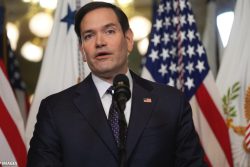Dear Editor,
I feel compelled to write this letter as our leaders are once again gathering in Grenada this weekend to discuss regional integration. Also, I’m partially motivated by your constant supportive editorial positions of the regional integration attempt widely known as Caricom. The emphasis is on ‘attempt,’ because the mere signing of a treaty does not establish integration. It symbolises a promise by leaders to enact a plan in trying to unify their respective economies. True integration only can be achieved through genuine, substantive implementation of this promise.
The Caricom promise is premised on ‘three pillars’ of cooperation in the economic, functional, and foreign policy areas. While there has been some successful movement in the area of functional cooperation, the other areas can be best characterised as stagnant or in deep hibernation.
Most of the blame for the failure of fulfilling the integration promise has been attributed to the lack of ‘political will’ among the region’s heads of states. For nearly 40 years now, leaders have shouldered the primary share of blame for making the rules on one hand and for breaking the rules on the other which effectively derail any serious attempt at implementation.
However, this criticism is overly simplistic. Few scholars, policy-makers or proponents of integration in the region have attempted to show the impracticality of Caricom integration efforts. Moreover, an unjustified sense of idolizing worship has been attached to this dream of the region’s natural unity so any attempts to criticise it are seen as nearly blasphemous.
While the nations’ leaders are accused of subverting and sabotaging the process, no such aspersions are cast on the region’s voters for not holding their elected officials accountable for a process that would clearly improve (at least as argued by proponents) their well-being and economic circumstances. Why have we not seen a more active, urgent civil discourse across the region that would alert, alarm, and ignite our governments to become serious about integration? In the case of the Caricom Single Market and Economy (CSME), why have we not seen our private sector up in arms over the slow pace of regional integration as one of the most glaring constraining barriers in its potential development?
Part of the answer lies in the realist notion that international politics is conducted in an arena of conflicting state interests, and that states are led by humans, who are by nature self-centred, self-interested and distrustful of others. Furthermore, nations – and by extension, its citizens – have an interest, at a minimum, in their own security and survival. Throughout many years, we have seen many examples of this being played out across the region – from Ralph Gonsalves’ criticism of Trinidad and Tobago and Caribbean Airlines over the Liat Airline to the T &T Prime Minister’s assertion that the Caribbean Court of Justice (CCJ) is not a priority but instead domestic issues like crime and flooding should be.
Other examples include the uproar in Guyana over Ansa McAl’s takeover attempt of Banks DIH and Trinidad and Tobago’s announcement that it will no longer be the region’s ‘godfather’ and any storm-affected countries will not receive non-reciprocated support. Still others include the appalling treatment of Guyanese nationals at airports in the region as well as Guyana and Jamaica, for example, breaching the Common External Tariff (CET) to source cement and rice respectively from external sources. Yet another is the signing of the PetroCaribe agreement despite Trinidad and Tobago’s objections. Unfortunately, there are still other examples indicating how our instincts turn inwards in the face of a perceived threat or limited national value, which only serve to delay and diminish the prospects of real sustainable development and growth.
Other regional integration movements – most notably, the European Union (EU) – have been able to move beyond self-interest and cooperate on many issues and levels. One explanation for our collective shortcomings might be that Caricom member countries do not constitute significant export markets for trade with each other (intra-regional trade) and, therefore, are more dependent on trade with the developed world. The average intra-regional trade as a fraction of total trade has been a relatively measly 13 per cent with the ‘more developed countries’ of Trinidad and Tobago, Jamaica, Guyana and Barbados accounting for around 94 per cent of all intra-regional trade. This situation creates few incentives to cooperate and makes it that much more important to reduce barriers with the first world, where the majority of trade is conducted. In the EU, intra-regional represents some 75 per cent of all trade.
Another reason for the current stalemate in making progress toward regional integration lies in the fact that while there was a desire for economic integration through the CSME there was little motivation to achieve political integration. In fact, the expert and scholarly literature argues consistently that an ‘economic demand’ for integration must be complemented – or preceded – by a ‘political supply’ of institutions to achieve this. In the EU, there is the European Council and Parliament where all decisions are debated and enacted along with a European Commission with the mandate to implement and ensure compliance.
In Caricom’s case, there are the heads of government meetings as well as the ceremonial and public relations agency known as the Caricom Secretariat, which has no real authority to ensure compliance. Moreover, the lack of a hegemonic or ‘big power’ to facilitate and drive enforcement of agreements and promises is a major limitation in Caricom integration efforts. The EU has Germany, Africa has South Africa, Latin America has Brazil and Asia has China.
The cost of and reliance on external support from donor agencies also make regional integration improbable and subject to the whims and fancies of external forces who can dictate the pace at which any efforts would move forward. Our countries do not have the financial capacity to justify an investment of the magnitude involved in integrating our economies. There are so many dimensions that require enormous funding to make Caricom a reality and this does not include the establishment of the necessary institutions. In fact, Norman Girvan has identified 17 just for CSME purposes in his ‘single development vision’ paper. Take for instance the massive costs associated with upgrading and modernising our transport infrastructure across the region and the recent revelations that the Caricom Community will be adopting “belt tightening measures” by reducing the budgetary allocation of the secretariat and other associated institutions.
Moreover, if the CSME provisions were to be implemented, numerous problems would arise across the region. First, they would restrict the government’s ability to implement context-specific and country-specific economic development strategies. Caricom, in effect, becomes a nation-state with individual countries reduced to the status of federal provinces. Moreover, the process assumes some sort of homogeneous reality across the region and that harmonisation of economic sectors, fiscal, monetary and taxation policy is achievable.
Any person with even a rudimentary knowledge of economics would see that this creates uneven benefits to some at the expense of others. For instance, a single tax system would increase tax rates in some countries while reducing it in others. Tax reductions would have enormous implications on national revenues in countries like Guyana with high tax rates and would increase the cost of living for countries that previously had lower rates. Both instances have welfare-reducing effects on a nation’s population. Similarly, a single currency would mean that countries like Barbados and Trinidad and Tobago would see the value of their national currency diminish, causing imports to become expensive. Meanwhile, countries like Guyana and Suriname would see the value of their currency appreciate, causing local produce and exports to be more expensive for overseas purchases, thus reducing trade volume.
A second disturbing dimension of the CSME is the fact that it exacerbates and institutionalises trade diversion and trade suppression. That is, replacing cheaper imports from non-member Caricom countries by higher-cost domestic producers, which is already occurring under the common external tariff (CET). Trade diversion reduces a country’s economic welfare and citizens do not benefit from the cheapest available price of goods. Only a global union can avoid all trade diversion. Therefore, unilateral tariff elimination with all countries will lead to greater trade creation without giving rise to trade diversion.
Proponents of regionalism view globalisation and trade liberalisation as an evil to be feared by individual nations in the Caribbean, which thwarts the imperative for collaborative efforts that would respond to this threat. But the reality does not show this, at least in the case of Guyana. A cursory historical look at our experiment with closed off and import substitution policies in the 1970s and 1980s shows that our economy regressed and stagnated. However, in the late 1980s and early 1990s, when Guyana adopted trade liberalisation policies as a result of the Economic Recovery Programme (ERP), Guyana’s economy grew at an average annual rate of seven per cent.
These growth rates probably would have continued if not for domestic political unrest that stymied the process in 1997. Furthermore, and despite non-integration, Guyana’s economy – as well as those of other Caribbean territories – is still recording growth. From all of this, one can conclude that the real evil or threat is not globalisation but rather the aggregate of domestic issues and policies. Instead of looking toward a regional solution, Caribbean countries should examine their own national realities in order to best take advantage of the opportunities afforded by globalisation.
Yours faithfully,
Clinton Urling








